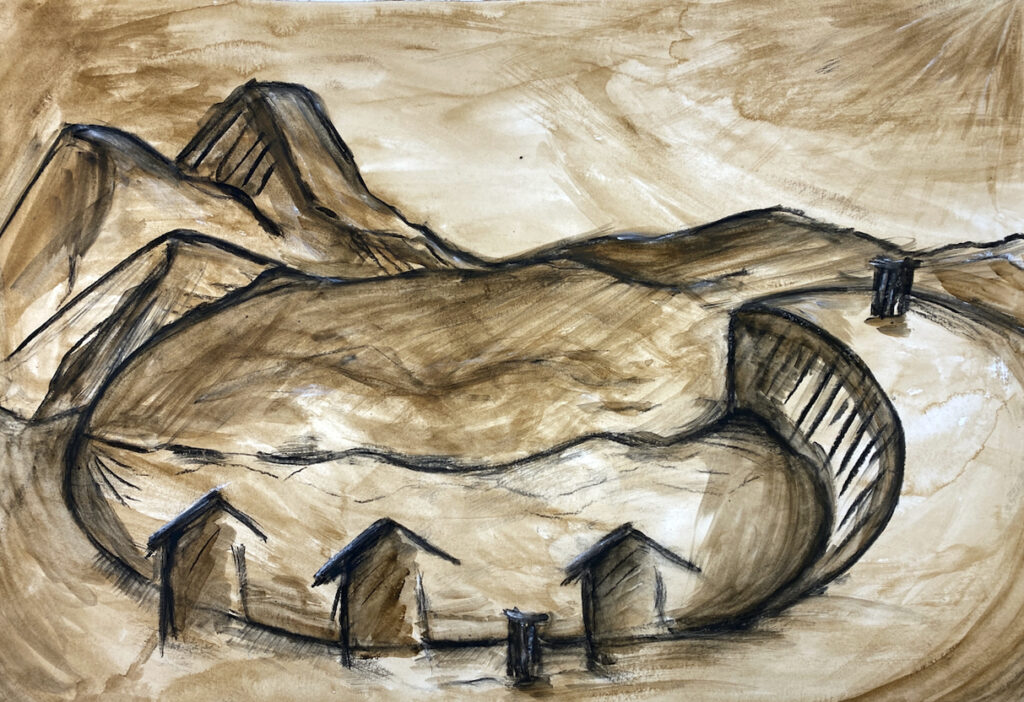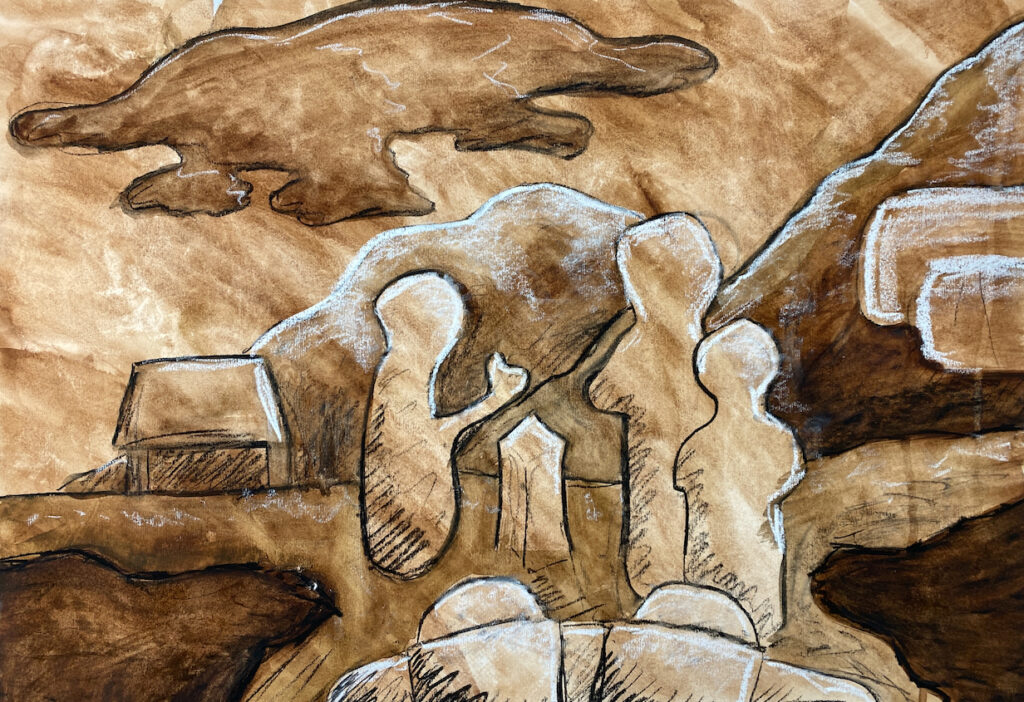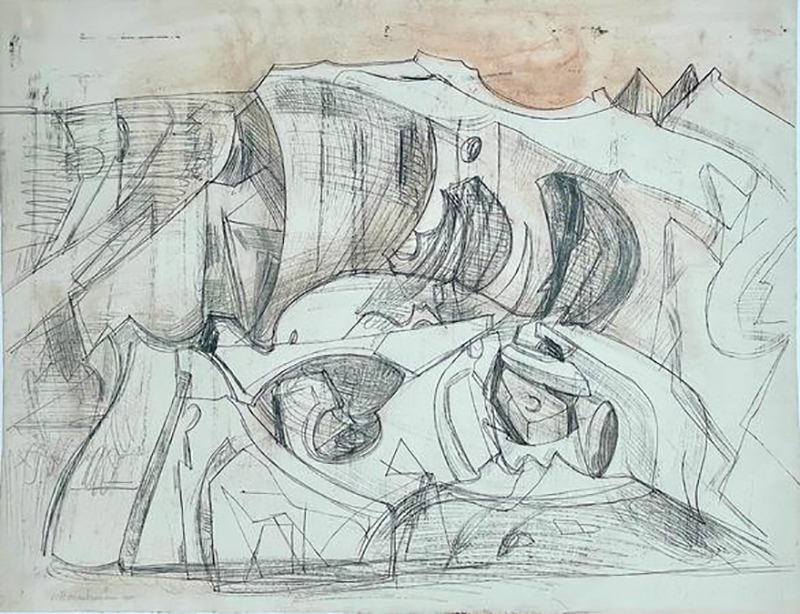
Wilhelmina Barns-Graham
Although born in Edinburgh in 1912, Wilhelmina Barns-Graham settled in St. Ives, Cornwall in 1940 for health and artistic reasons, remaining there as part of the thriving artist community for most of her life. She did, however, travel widely in Europe (Switzerland, Italy and Canary Islands), often with her close friend Ben Nicholson, where she found inspirational landscapes such as the Grindelwald Glacier depicted in her drawing Study for Large Shelf I (Glacier). In this and many other works she experimented with the latest ideas in drawing. Here she used offset drawing; a method used by Paul Klee involving a kind of monoprinting technique which she developed further so as to be able to make several images from the same drawing.
You can see a selection of her landscape drawings in a little gem of an exhibition at the British Museum until 12th May. Click here to learn more about it.
Her wonderfully animated and flowing use of line, with repeated mark-making to give weight and emphasis, moves the eye around to examine every crevice and crack.
Much later, in her 80’s and showing few signs of diminishing energy, she visited Lanzarote where she drew the structure and form of the volcanic landscape, in various media as exemplified by her work Lava Forms Lanzarote 2 using white chalk on black paper. Her view was; At my age now there’s no time to be lost. I say to myself: ‘Do it now, don’t be afraid … there’s still so much I want to do. Life is so exciting, nature is so exciting. Trying to catch the one simple statement about it. That’s what I’m aiming for. I’ll keep on trying.
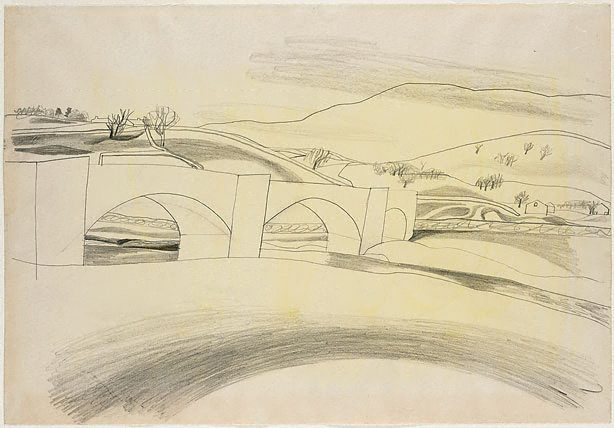
Ben Nicholson
Drawing was also fundamental to the practice of Barns-Grahams long-time friend and fellow St. Ives artist, Ben Nicholson. Nicholson’s artistic maturity; the drawings and painted reliefs made between 1950 and 1975, together with the white reliefs of 1934-9, are the works by which he himself wished to be judged. The drawings have mistakenly been viewed as somehow subsidiary to the paintings and reliefs, when in fact their qualities of wit, poetry, spontaneity and sheer virtuosity place them among Nicholson’s finest and most personal achievements. The late reliefs are shown to be complementary expressions of the interiorized vision that underlies all Nicholson’s work. As his imagination ranges from the particular to the universal, the two-dimensional image explores one facet of reality, the three-dimensional object another. Burnsall Bridge, shown here, illustrates his style of clean, geometric and precise draughtsmanship.
This interesting video looks in detail at Nicholson’s landscape drawing practice alongside his reliefs.
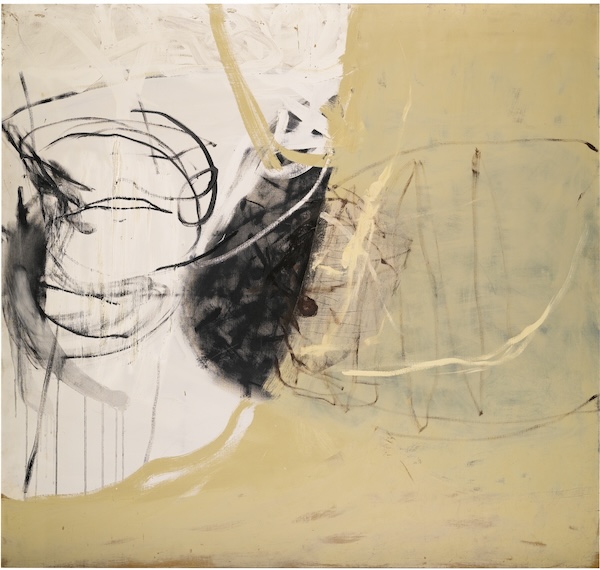
Roger Hilton
Of a slightly later generation of St.Ives-related artists, Roger Hilton’s reliance on drawing expressed itself in a very different manner. Though he is often considered part of the St.Ives group of artists he arguably produced his best work when he lived and painted in London spending only the summer months in the south-west gathering material and inspiration. He was more influenced by other European artists of his generation than by American abstract expressionists. By 1960 he had arrived at his own language of painting and drawing which blended abstraction and figuration and placed drawing centre-stage through his varied mark making and use of the charcoal line.
Hilton’s artist wife Rose Hilton gives her personal account of his work in this insightful video (37 mins).
His paintings such as December 1960, shown here, use lines, colours and shapes derived from landscape to create personal expressions of place. In this work the simple compositional arrangements belie the consideration that has gone into the juxtaposition, layering and exposed traces of underpainting and drawing. The painting gives the impression of spontaneity and although Hilton painted in quick short bursts, there was much contemplation and deliberation about his next move – every gesture in a Hilton painting is deliberate, considered and made to count. Hilton’s mature style intentionally brought the notion of the sketch to the finished picture, thus generating a new immediacy in the work. This unique style of blending apparent control with uninhibited spontaneity earned Hilton his reputation as one of the most innovative and exciting artists of Post-War Britain.
A lesson idea
I used the above as a starting point for a nice 90 minute lesson where children used drawing to recall a view from memory. It would have worked just as well with adults too. Students sketched as they tried to remember their scenes, starting with what they could remember of the structure of the whole scene, before adding fragments and details when they came to mind. Having discussed the images above, I asked my students to develop their sketches into A2 watercolour paintings with a mid-century, modernist feel.
